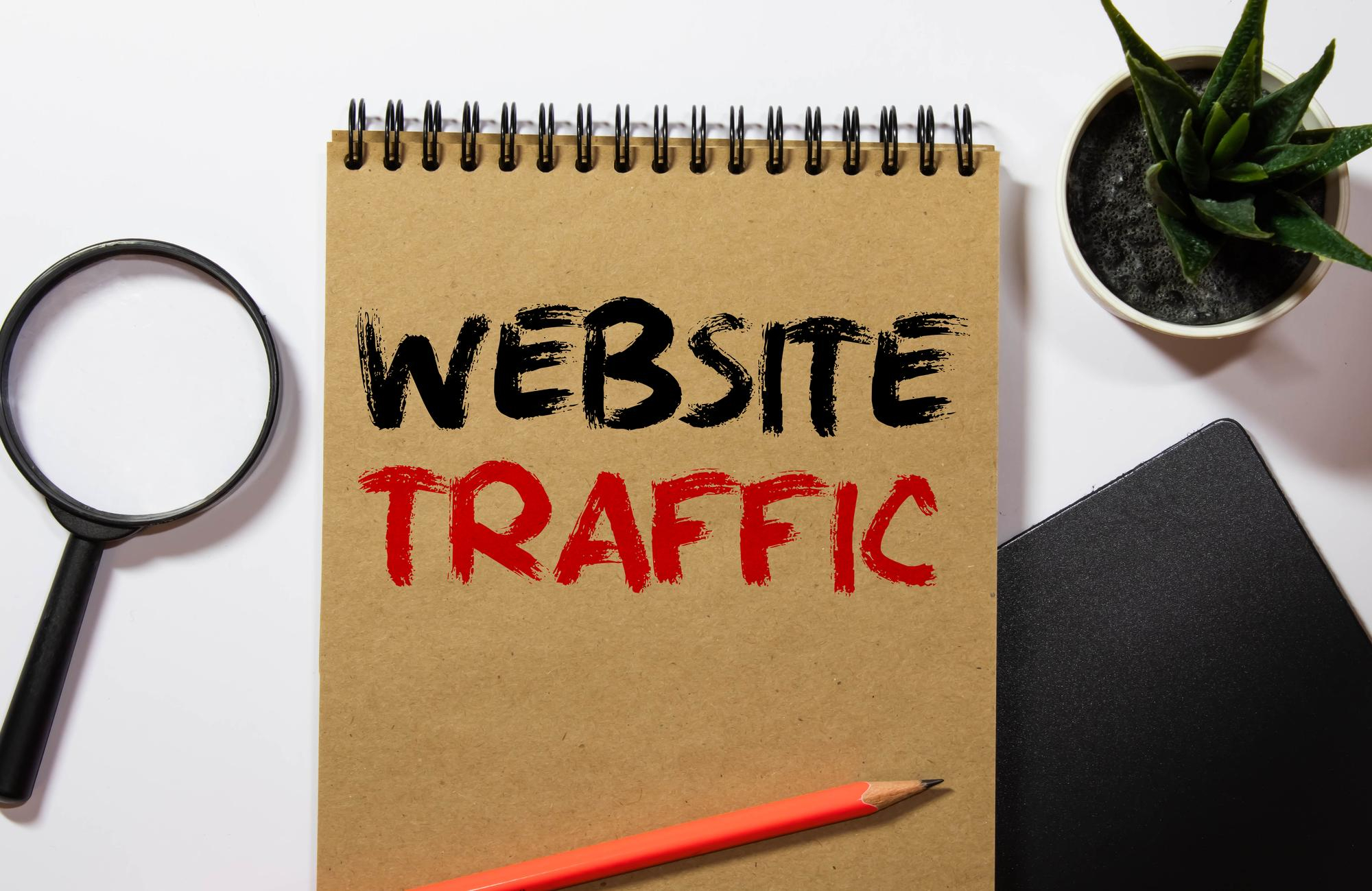Table of Contents
Driving traffic to your website is crucial if you want to build an online presence, attract new customers, and grow your brand. But with so many strategies available, it can be overwhelming to figure out where to start. In this blog, we’ll cover everything you need to know about how to get traffic on your website, from simple techniques to advanced tactics. Whether you’re just starting out or looking for ways to boost your website traffic rankings, this guide will provide you with actionable steps to increase website traffic freely and effectively.
Why Traffic Matters for Your Website
Traffic is the lifeline of a website. It brings potential customers, boosts engagement, and increases conversions. If you’re not seeing any traffic or struggling with no traffic at all, don’t worry. With the right strategy, you can turn things around. Here at Wonkrew, we know how to help you increase website traffic and boost your brand visibility online.
1. Optimise for SEO Traffic
SEO, or Search Engine Optimisation, is a game-changer. It involves optimising your website so search engines like Google can easily find and rank it. When done right, SEO can bring a steady stream of web traffic.
- Keyword Research: Start by researching keywords related to your niche. Use tools like Google Keyword Planner to find words your audience is searching for. Your primary focus should be on the main keyword, “how to get traffic on your website,” but also target long-tail keywords to capture specific search queries.
- On-Page SEO: Ensure each page on your site is optimised. Include your primary and secondary keywords in headings, content, meta descriptions, and image alt texts. This helps search engines understand your content and improves website traffic rankings.
- Content Quality: Quality content is non-negotiable. Write articles that answer questions, solve problems, or provide valuable information. A well-written blog is more likely to attract visitors and keep them engaged, increasing SEO traffic.
2. Create High-Quality, Shareable Content
Quality content acts as a magnet for web traffic. The more useful, engaging, and shareable your content is, the more likely people are to visit and share it with others. Content that educates or entertains can spread quickly, boosting traffic to your website.
- Blogging: Start a blog and publish content regularly. Blog topics can range from how-tos and guides to industry news and updates. Consistency is key here; make a habit of publishing weekly or bi-weekly to keep the momentum going.
- Videos and Infographics: Mix up your content by including visuals like videos and infographics. People love visual content, and it’s highly shareable. An infographic on “how to increase website traffic free” can be widely shared on social media, driving additional website hits to your site.
3. Leverage Social Media Channels
Social media is a powerful tool to increase website traffic. Platforms like Facebook, Instagram, LinkedIn, and Twitter can introduce your website to a wider audience.
- Share Your Content: Promote your blog posts, products, and services across your social channels. The more people see your posts, the more website hits you’ll get.
- Engage with Your Audience: Reply to comments, ask questions, and encourage sharing. Engagement drives visibility, and more visibility means more traffic.
- Run Contests or Giveaways: People love winning prizes. Hosting a contest can draw attention to your brand and drive visitors to your website.
4. Email Marketing to Drive Traffic
Email marketing remains one of the most effective ways to get people back to your website.
- Create a Newsletter: Send regular updates, blog highlights, and exclusive offers to your subscribers. If people find your content helpful, they’ll click through to your website.
- Offer Exclusive Content: Share valuable content or discounts that are only available to subscribers. This creates a sense of exclusivity and encourages clicks.
- Segment Your Audience: Divide your audience based on their preferences. This allows you to send tailored content to different groups, increasing the chances of engagement and clicks.
5. Use Guest Blogging to Reach New Audiences
Guest blogging can expand your reach and increase website traffic. Writing for reputable sites allows you to showcase your expertise and link back to your site.
- Find Niche Blogs: Reach out to blogs that cater to your target audience. A well-placed article with a link back to your site can drive relevant traffic.
- Share Insights: Write informative posts that provide value to readers. This builds credibility and encourages readers to visit your site for more information.
- Collaborate with Influencers: Partner with influencers or industry experts to write guest posts on your site. They’ll likely share the content with their audience, helping you gain more website hits.

6. Enhance User Experience (UX)
A positive user experience is key to keeping visitors on your website. If your site is difficult to navigate, people will leave, which leads to higher bounce rates and lower rankings.
- Improve Page Speed: Slow loading times drive users away. Use tools like Google PageSpeed Insights to check website traffic and speed up your site. Compress images, enable caching, and reduce server response times to make your site faster.
- Make It Mobile-Friendly: Many users access websites on their phones. Ensure your site is responsive, meaning it adjusts to different screen sizes. A mobile-friendly website will lead to more traffic, as users are more likely to stay on your page.
- Simplify Navigation: Keep your site structure simple. Make it easy for visitors to find what they’re looking for, and provide clear CTAs (Call to Actions) to guide them through your site.
7. Try Paid Advertising to Increase Website Traffic
Paid advertising can give your traffic an instant boost. With platforms like Google Ads and Facebook Ads, you can target specific demographics to drive traffic directly to your site.
- PPC (Pay-Per-Click) Ads: Set up ads targeting keywords related to your business. PPC ads appear at the top of search results, capturing high-intent traffic.
- Social Media Ads: Boost posts on social media or create ads to reach a larger audience. Targeting specific user interests can help you attract the right visitors to your website.
- Retargeting Ads: These ads target people who have previously visited your site but didn’t take action. Retargeting ads can bring them back, increasing the likelihood of conversion.
8. Analyse and Adjust Your Strategy
Tracking your progress is crucial. Without analytics, you won’t know if your efforts are paying off or what adjustments need to be made.
- Use Google Analytics: Check website traffic regularly to understand where visitors are coming from and which pages perform best. This tool gives you insights into traffic sources, visitor behaviour, and more.
- Monitor SEO Performance: Tools like Google Search Console help track how well your site performs in search engines. They provide keyword rankings and highlight areas for improvement.
- Adjust Accordingly: Based on the data, refine your strategy. Focus on what works and adjust what doesn’t to keep traffic flowing.
Conclusion
Building a steady flow of traffic takes time, patience, and effort. But with the right strategies in place, you’ll see growth. By using a mix of SEO, quality content, social media, and paid advertising, you’ll be well on your way to increasing website traffic and achieving your business goals.
If you’re looking for expert guidance, Wonkrew is here to help. As a top digital marketing agency, we know the ins and outs of how to get traffic on your website and improve your online presence. Let us help you reach your traffic goals and grow your brand.
Frequently Asked Questions (FAQs)
1. What are the common reasons my website isn’t getting traffic?
Common reasons for low website traffic include poor SEO practices, lack of quality content, slow loading speeds, and limited social media presence. Additionally, not targeting the right audience or failing to promote your site can lead to minimal visibility, resulting in few visitors.
2. How can I improve my website’s SEO to attract more visitors?
To improve SEO, start by researching relevant keywords and incorporating them naturally into your content. Optimize meta titles and descriptions, ensure your site is mobile-friendly, and improve loading speeds. Building quality backlinks and regularly updating content also enhance your site’s visibility in search results.
3. What role does content quality play in driving website traffic?
High-quality content is essential for attracting and retaining visitors. It provides value, answers questions, and engages users, encouraging them to share it. Quality content also boosts your SEO rankings, making it easier for search engines to find and recommend your site, leading to increased traffic.
4. How can I effectively use social media to drive traffic to my website?
To use social media effectively, share engaging content and links to your website regularly. Utilise visuals, interact with followers, and participate in relevant conversations. Running targeted ads and collaborating with influencers can expand your reach, driving more traffic to your website from social platforms.
5. What tools can I use to analyse my website traffic and identify issues?
Popular tools for analysing website traffic include Google Analytics, SEMrush, and Ahrefs. These tools provide insights into visitor behaviour, traffic sources, and SEO performance. They can help identify issues like high bounce rates and slow-loading pages, allowing you to make data-driven improvements.




